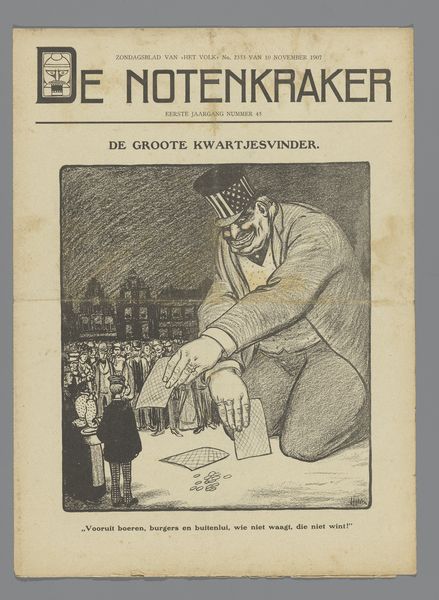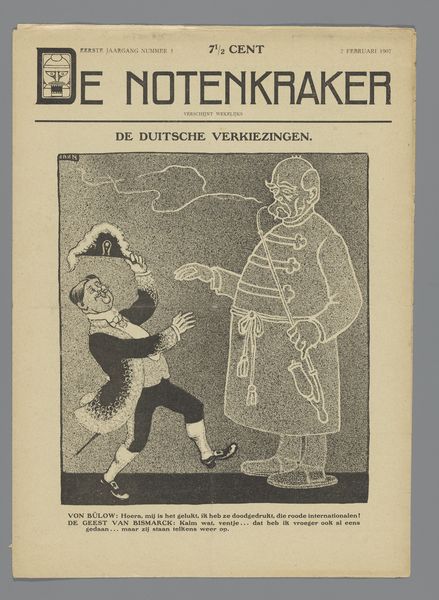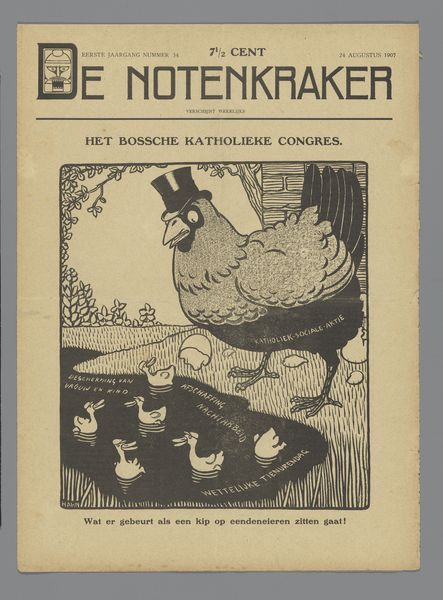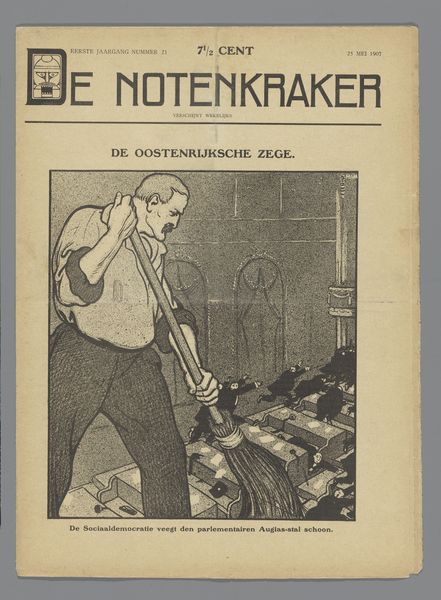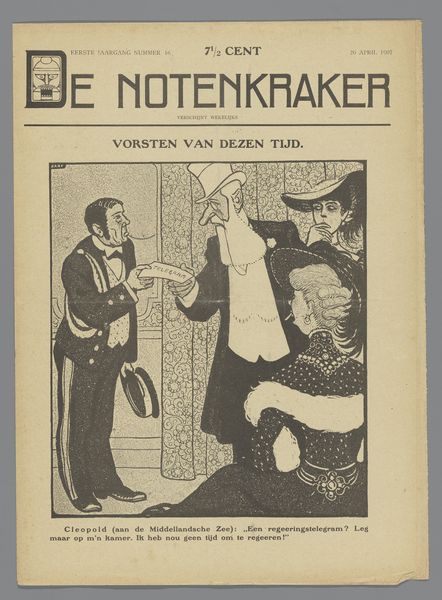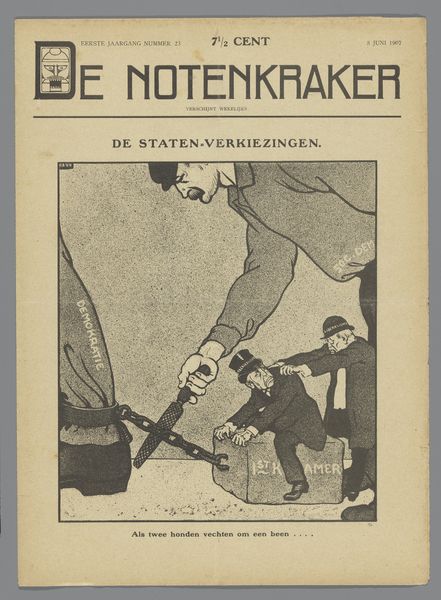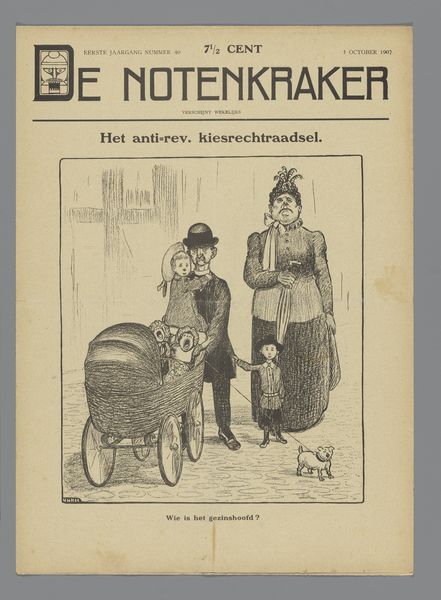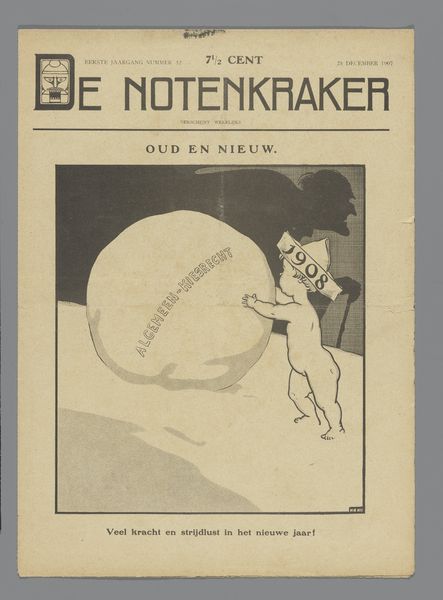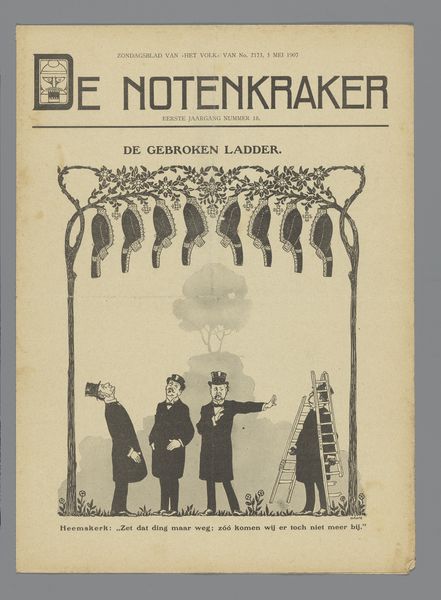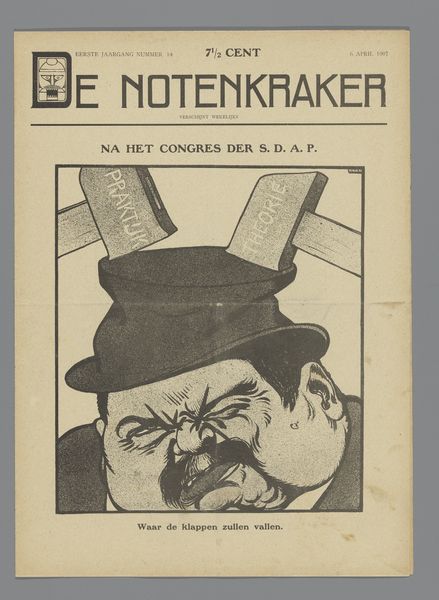
De Notenkraker, 14 september 1907 / Kiesrecht en sociale hervormingen Possibly 1907 - 1914
0:00
0:00
drawing, print, pen, poster
#
drawing
# print
#
social-realism
#
symbolism
#
pen
#
poster
Dimensions: height 348 mm, width 252 mm
Copyright: Rijks Museum: Open Domain
Curator: This is a page from "De Notenkraker," a Dutch satirical magazine, dated September 14, 1907. The image, titled "Kiesrecht en sociale hervormingen," translates to "Suffrage and Social Reform." It's likely a pen drawing reproduced as a print, and its artist is Albert Hahn. Editor: It immediately strikes me as a portrait of helplessness, a man bound by thick chains, juxtaposed with this weighty, almost monumental load labeled "Social Reform". The tonal range creates an unsettling and urgent mood. Curator: Hahn frequently employed symbolism to address the socio-political climate of the time. This particular piece critiques the slow pace of social reform. Notice the figure on the left? That is likely a political figure, minister De Meester who the chained worker is calling out to "make my strong arms free from the chains of the electoral law." Editor: Those chains really stand out. Chains historically represent captivity and restriction, which fits the imagery. But the weight is literal as well: chained, he cannot bring forth that much-needed social reform, visualized as the large parcels being pulled behind him. It’s also a striking metaphor for disenfranchisement, doesn't have access to tools to help himself or others. Curator: Precisely! Consider the broader context: This was a period of growing labor movements and demands for universal suffrage in the Netherlands. The artwork becomes a poignant commentary on how political stagnation hinders progress. And if social reform doesn't progress there may be unrest. Editor: Thinking about it, the scale amplifies the message. The disproportionate size of the chained man emphasizes a kind of enforced immobility and dependence. You can almost feel the worker's helplessness at having the chains wrapped around his arms. He is waiting, bound, dependent. Curator: Indeed. This image offers us a historical snapshot but also serves as a powerful reminder of the ongoing struggle for equality and social justice. Hahn's ability to connect individual struggles with broader societal themes makes it a lasting social statement. Editor: Definitely. The clarity of the symbols and the starkness of the imagery help to create lasting and resonant commentary on these societal and political forces and figures.
Comments
No comments
Be the first to comment and join the conversation on the ultimate creative platform.

